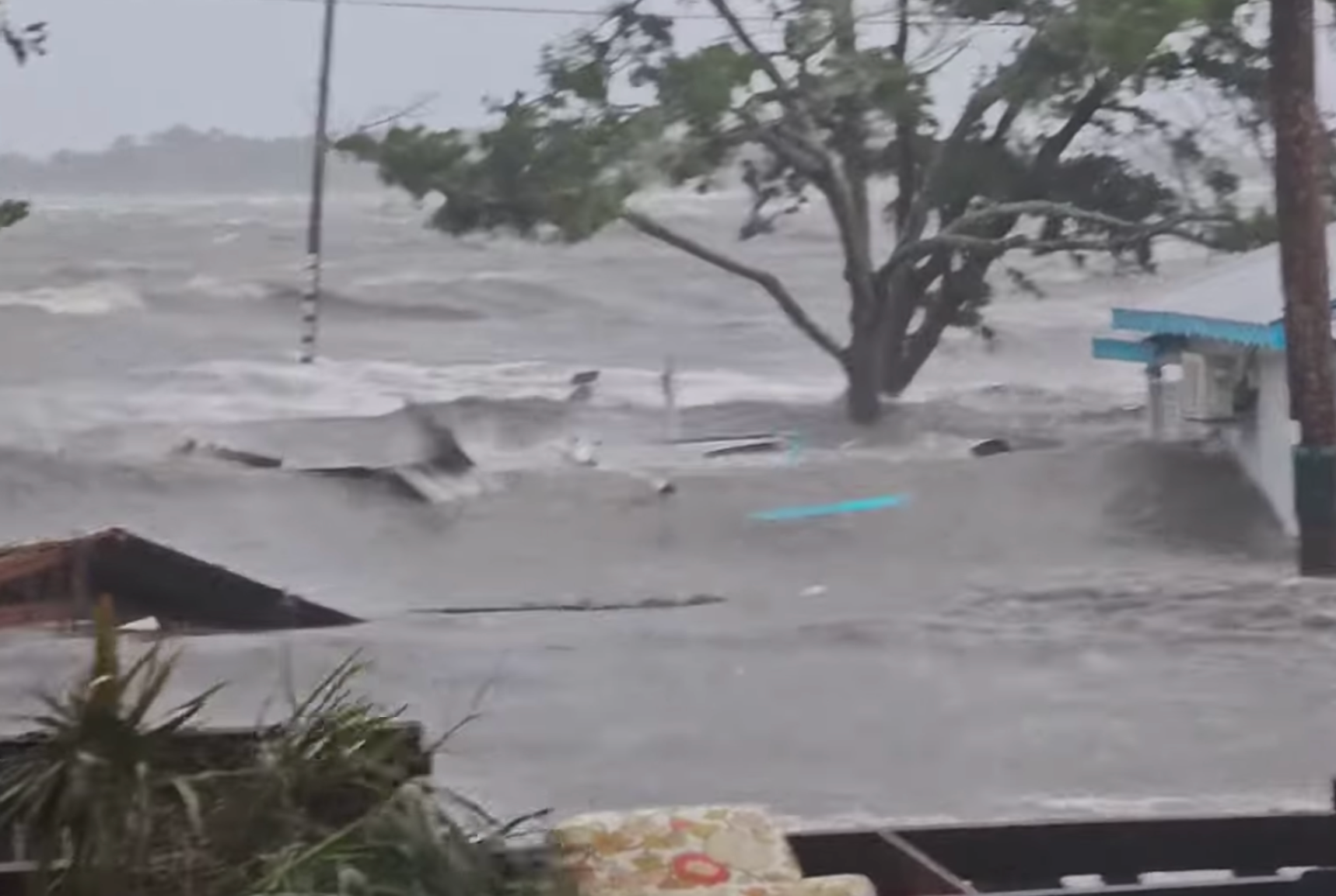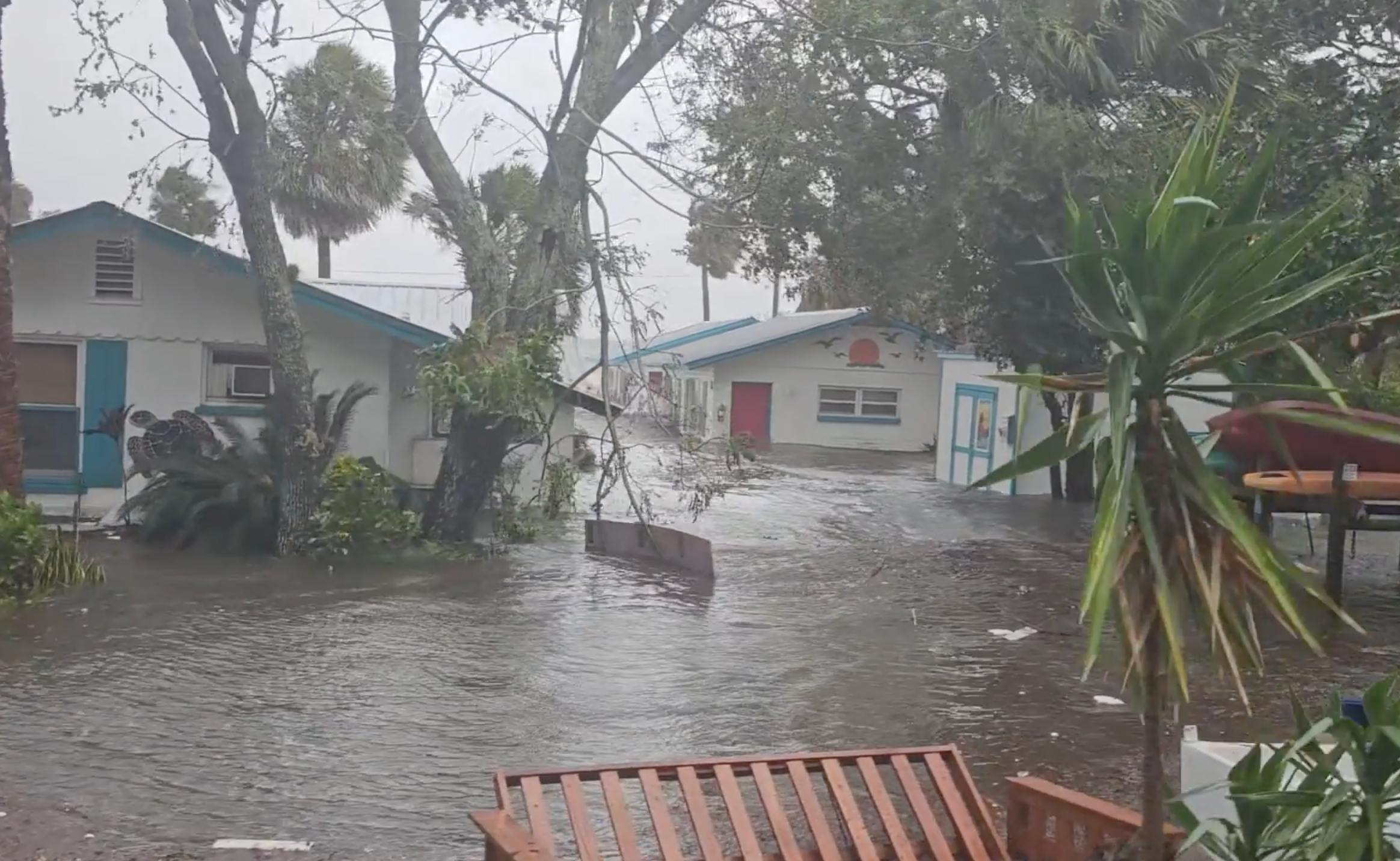‘Houses everywhere are submerged’: Florida residents share heartbreaking photos of Hurricane Idalia’s wrath
Idalia made landfall as a powerful, ‘extremely dangerous’ storm on Florida’s ‘nature coast’
Your support helps us to tell the story
From reproductive rights to climate change to Big Tech, The Independent is on the ground when the story is developing. Whether it's investigating the financials of Elon Musk's pro-Trump PAC or producing our latest documentary, 'The A Word', which shines a light on the American women fighting for reproductive rights, we know how important it is to parse out the facts from the messaging.
At such a critical moment in US history, we need reporters on the ground. Your donation allows us to keep sending journalists to speak to both sides of the story.
The Independent is trusted by Americans across the entire political spectrum. And unlike many other quality news outlets, we choose not to lock Americans out of our reporting and analysis with paywalls. We believe quality journalism should be available to everyone, paid for by those who can afford it.
Your support makes all the difference.Florida residents shared heartbreaking photos of the destruction caused by Hurricane Idalia after the powerful storm swept into the state on Wednesday.
Idalia made landfall around 8am as an “extremely dangerous” Category 3 storm with 120mph winds and warnings of “catastrophic” coastal surge up to 15 feet in places. More than 250,000 customers were left without power on Wednesday.
The hurricane came ashore near Keaton Beach in Big Bend, southeast of Tallahassee, an area known as “Florida’s nature coast” and less densely-populated than other parts of the state.
But that was cold comfort for the small, tranquil communities dotting the coastline with Idalia forecast to be the strongest storm to hit the region in more than 100 years.
Cedar Key was one of those severely impacted by storm surge and winds. Michael Presley Bobbitt, a playwright who lives in the town, decided not to evacuate and was sheltering on the second floor of his home, he shared on social media.
“I’m okay. The water has made it to my backyard but it will have to go up 7 ft to flood my house I might be about to get lucky. The rest of the island is not lucky. Our entire downtown is submerged. Houses everywhere are submerged. The far away in [sic] is coming apart and heading out into the Gulf of Mexico,” he posted on Wednesday morning.
The Far Away Inn, a small “pet friendly” business of motel and cottages, is located a short walk from the beachfront.

Mr Bobbitt shared photos and videos of waves lapping up the windows of single-story homes as torrents of water swept away roofs, wooden structures and furniture.
“I’m gonna get a motorboat here in the water shortly, so I can get to some of the outlying areas of the island to make sure that there are no old people stuck or in need of help,” he told the BBC.
Michael R Holley, an author and owner of Cedar Key Pizza And Subs restaurant, also shared updates from the island.
He wrote that power went out around 5am and that peak storm surge was a little over 6ft where he was but there were “mixed reports from downtown”.
“[T]hank you to the sooooo many who have reached out,” he wrote.
Cindy Bonish, another resident, shared images from the ocean-facing Dock Street. Her photos showed water rushing through restaurants and other businesses.
“Dock Street looks like it took a pretty big hit, these restaurants keep our town alive. If anyone has the ability, please contact owners or workers in any restaurant in Cedar Key, they are our life line,” she wrote.
“Also The Cedar Key Market, our only source of real groceries on the island, if we can help them salvage something it would be good for the entire city. This is going to be a hard one for all but if we all work together hopefully we can get back soon.”
The owners of Cedar Key’s Low-Key Hideaway and Tiki Bar, who evacuated for the hurricane, shared photos from a camera set up inside the business which showed it had been partially submerged.
“Thank you all so much for the kind words!! We hope all our friends and neighbors, wherever they are, are safe! The resilient nature of the people here is unmatched and I know we will all come back better than before. It truly takes a village. Look out for more pictures when we get back to the island. Hope to see you all soon, one way or another,” they wrote.
Cedar Key Fire Rescue asked for people to be patient as they waited for the retreat of high tide before surveying the town.
“Most of the streets around the downtown area are underwater. We cannot get out at this time to see judt how bad things are. Please do not come to Cedar Key. We will let everyone know when roads are open so you can come to town safely... We have no power,” officials wrote on Wednesday morning.

Idalia also impacted areas still recovering from Hurricane Ian which struck Florida less than a year ago. The Category 4 storm killed 150 people and damaged 52,000 structures.
Streets flooded in Fort Myers Beach after it sustained major damage in September 2022. Powerful waves also lashed the three-mile long Sanibel Island causeway which was partially destroyed during Ian.
Idalia rapidly intensified overnight as it barrelled towards Florida’s west coast where thousands of residents had been ordered to evacuate. And thought it may be the first major storm to hit Florida this hurricane season, it joins a long list of disasters in the United States and globally which are being amplified by the climate crisis.
In recent decades, the ocean has absorbed 90 per cent of excess global heat, largely caused by emissions from burning fossil fuels, and this summer has seen historical high surface temperatures including around Florida. Warmer waters supercharge tropical cyclones with more heavy rainfall and storm surge as they come ashore.
While the frequency of tropical storms is not increasing, the chance that they become stronger and more destructive systems has increased by about 8 per cent per decade in the past 40 years, according to climate scientists. The proportion of Category 4 and 5 tropical cyclones is also projected to increase around the world in the coming decades due to human-caused warming, according to the latest report from the UN’s Intergovernmental Panel on Climate Change (IPCC).
The Atlantic hurricane season, which runs from 1 June to 30 November, is forecast to be above average this year.




Join our commenting forum
Join thought-provoking conversations, follow other Independent readers and see their replies
Comments